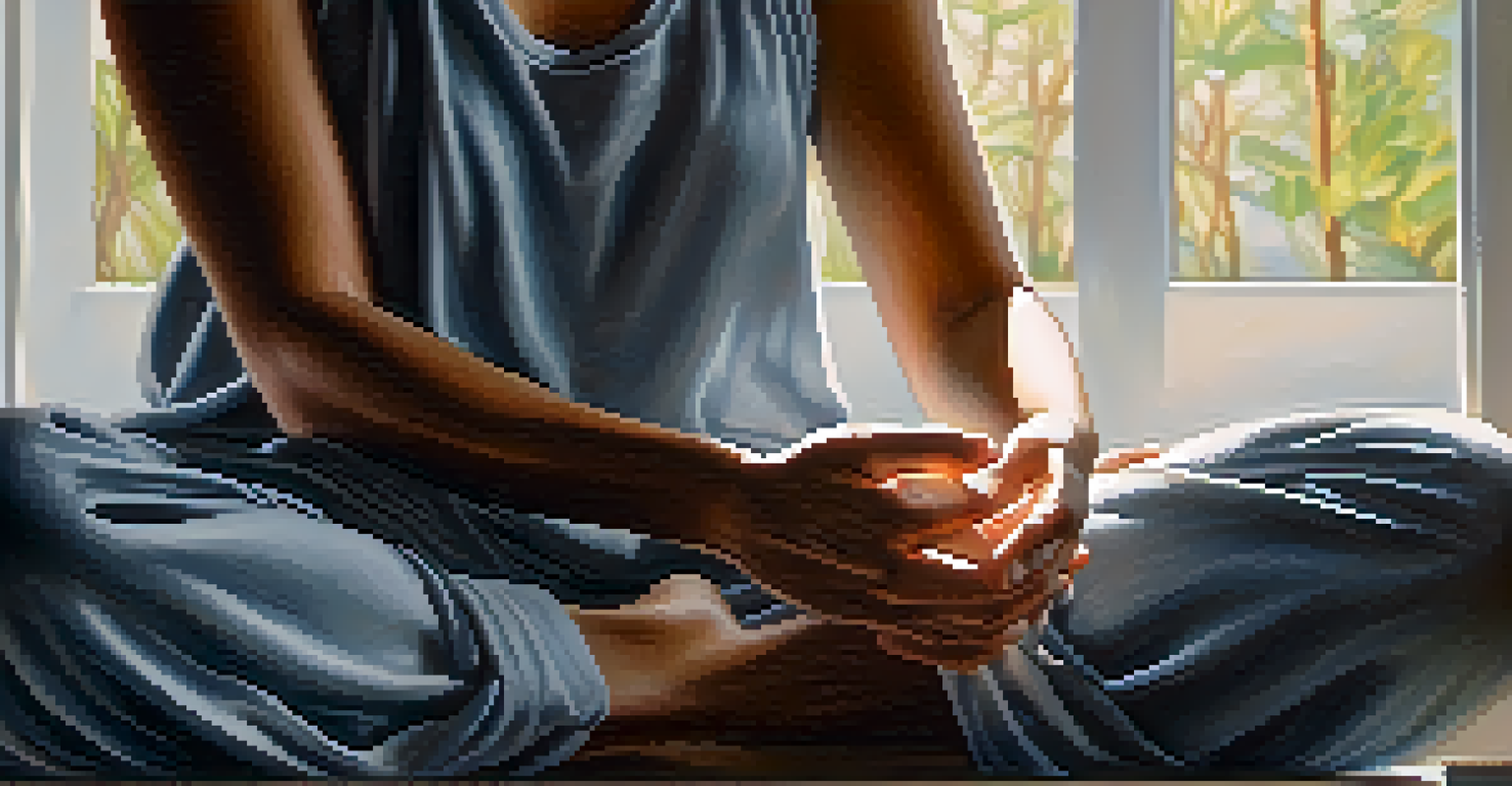Chronic Pain and Seasonal Affective Disorder: A Link?

Understanding Chronic Pain: A Brief Overview
Chronic pain is often defined as pain that lasts for more than three months. Unlike acute pain, which serves as a warning signal for injury, chronic pain persists and can significantly impact daily life. Conditions like arthritis, fibromyalgia, and back pain are common examples of chronic pain that millions experience worldwide.
Pain is inevitable. Suffering is optional.
Living with chronic pain can lead to a range of emotions, from frustration to despair. It can affect not just physical health but also mental well-being, making everyday tasks feel insurmountable. For many, this ongoing discomfort can become a part of their identity, shaping their interactions and perspectives.
Understanding chronic pain is crucial, as it highlights the need for effective management strategies. These can include medication, physical therapy, and lifestyle changes, all aimed at improving quality of life. Recognizing its complexity sets the stage for exploring how it might intersect with other conditions, like Seasonal Affective Disorder.
What is Seasonal Affective Disorder (SAD)?
Seasonal Affective Disorder, commonly referred to as SAD, is a type of depression that occurs at a specific time of year, usually in the fall and winter months. It’s believed to be linked to changes in light exposure, which can disrupt our circadian rhythms and impact mood-regulating hormones. Symptoms may include fatigue, irritability, and changes in sleep patterns.

For those affected, the dreary winter months can feel like a long, dark tunnel with no end in sight. People might find themselves withdrawing from social activities they once enjoyed, leading to feelings of isolation. This can create a vicious cycle, where the lack of sunlight and social interaction exacerbates feelings of sadness and hopelessness.
Chronic Pain Affects Daily Life
Chronic pain, lasting over three months, can significantly disrupt physical and mental well-being.
Understanding SAD is important for identifying effective coping mechanisms. Treatments often include light therapy, psychotherapy, and medication, aiming to restore balance and improve mood. As we delve deeper into the connection between chronic pain and SAD, it’s essential to keep these symptoms and treatments in mind.
The Overlapping Symptoms of Chronic Pain and SAD
Both chronic pain and Seasonal Affective Disorder share a range of overlapping symptoms, including fatigue, sleep disturbances, and difficulty concentrating. This similarity can make it challenging for individuals to distinguish between the two, leading to potential misdiagnosis. The mind-body connection plays a significant role in how these symptoms manifest.
The greatest discovery of my generation is that a human being can alter his life by altering his attitude.
For instance, persistent pain can lead to emotional distress, which may trigger or worsen depressive symptoms associated with SAD. Conversely, the lethargy and low mood from SAD can make it harder to cope with chronic pain. It’s a cyclical relationship that can trap individuals in a negative feedback loop, where one condition exacerbates the other.
Recognizing these overlapping symptoms is crucial for effective treatment. Addressing both conditions simultaneously can lead to better outcomes and improved quality of life. It’s important for individuals experiencing these symptoms to communicate openly with healthcare providers about their experiences.
The Role of Light Exposure in Pain Management
Light exposure plays a vital role in regulating our mood and biological rhythms, which can, in turn, influence pain perception. Natural sunlight is known to boost serotonin levels, a neurotransmitter that helps regulate mood and can also impact how we experience pain. This connection highlights the importance of seeking light during the darker months.
For those suffering from chronic pain, incorporating light therapy into their management plan may offer relief. This non-invasive treatment can help alleviate symptoms of both SAD and chronic pain, creating a dual benefit. Simple actions like taking walks outside during daylight or using light therapy lamps can make a significant difference.
SAD and Chronic Pain Overlap
The symptoms of Seasonal Affective Disorder and chronic pain often intersect, complicating diagnosis and treatment.
Understanding the importance of light exposure empowers individuals to take proactive steps in their pain management. It’s about finding ways to harness the power of light to elevate mood and potentially lessen pain perception. This holistic approach encourages individuals to think beyond traditional treatments.
Coping Strategies for Dual Challenges
Coping with both chronic pain and Seasonal Affective Disorder requires a multifaceted approach tailored to individual needs. Simple strategies can include maintaining a consistent daily routine, which helps regulate mood and energy levels. Incorporating mindfulness practices, such as meditation or yoga, can also be beneficial for both conditions.
Social support is another crucial element in managing these overlapping challenges. Connecting with friends or support groups, whether in-person or online, can provide emotional comfort and understanding. Sharing experiences with others who face similar struggles can help alleviate feelings of isolation and foster a sense of community.
Additionally, seeking professional help is essential. Therapists and pain management specialists can work together to create a comprehensive plan that addresses both chronic pain and SAD. This collaborative approach can lead to improved coping strategies and a better quality of life.
The Importance of Professional Guidance
Navigating the complexities of chronic pain and Seasonal Affective Disorder can be daunting. Professional guidance is essential for accurate diagnosis and effective treatment. Healthcare providers can help individuals understand their symptoms and offer tailored strategies that address both conditions holistically.
Regular check-ins with healthcare professionals can ensure that treatment plans remain effective and evolve as needed. This might include medication adjustments, therapy options, or lifestyle modifications to better cope with symptoms. Having a trusted professional to turn to can provide reassurance and support during difficult times.
Light Exposure Aids Pain Management
Natural light exposure can help regulate mood and potentially reduce pain perception for those suffering from chronic pain and SAD.
Involving a multidisciplinary team, such as psychologists, physical therapists, and nutritionists, can enhance overall well-being. This team approach allows for a more comprehensive understanding of how chronic pain and SAD interact, leading to more effective management strategies and improved outcomes.
Looking Ahead: Hope and Healing
While living with chronic pain and Seasonal Affective Disorder can feel overwhelming, it’s essential to remember that hope and healing are possible. Many individuals find relief through a combination of therapies, lifestyle changes, and a supportive community. Embracing a proactive mindset can empower individuals to take control of their health.
Personal stories of resilience can inspire those facing similar challenges. Many people have found ways to manage their symptoms effectively and reclaim joy in their lives. Sharing these experiences can foster understanding and hope for others who may feel isolated in their struggles.

The journey towards healing is often nonlinear, with ups and downs along the way. However, by staying informed, seeking support, and remaining open to various treatment options, individuals can navigate the complexities of chronic pain and SAD with a sense of optimism.